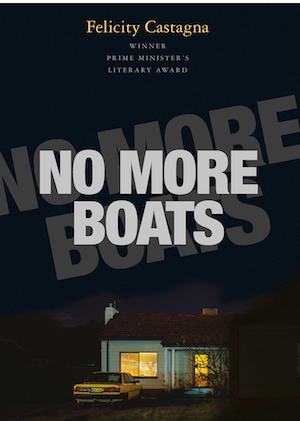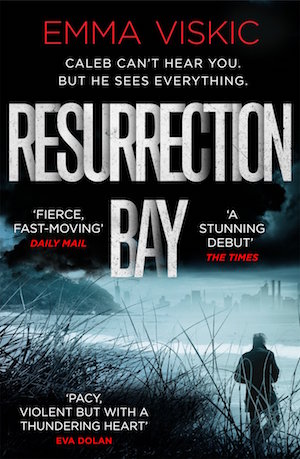Fiction – paperback; Hatchette Australia; 260 pages; 2017.
Mark Brandi’s debut novel Wimmera had the unusual honour of winning the prestigious Crime Writers’ Association Debut Dagger in 2016 before the author even had a publishing deal.
Not long later Hatchette Australia picked it up and it was released in Australia last year. It has since been acquired by Legend Press, here in the UK, where it will be published next March.
Billed as a crime novel, I think it’s more accurate to describe Wimmera as literary fiction that just so happens to have a crime in it. The focus is really on two boys coming of age in rural Australia in the 1990s and what happens to them in one seminal year that changes their lives forever.
Body in the river
The book’s prologue sets the scene: two youngsters out looking for yabbies find a green wheelie bin stuck near a tree in the river of a small country town. The lid has been bolted down securely, suggesting that whoever closed it up “didn’t want what was in there to ever come out”.
The opening chapter spools back 20 years, to the same country town, where we meet Ben and Fab, two young boys, on the cusp of adolescence, who are best friends. Their lives are dominated by school and football and playing by the river.
Their carefree existence is hampered only by the violence of Fab’s Italian father, who lashes out with his fists, and troubled memories of Daisy, a local 14-year-old who hanged herself on the family’s clothesline. Later when Daisy’s family move away and a new neighbour, the mysterious Ronnie, moves in, Ben takes a summer job mowing Ronnie’s lawn hoping this will help him figure out who this strange man is: Fab has a theory he’s a secret agent.
In part two, the narrative returns to where it started and we find out that Fab is still living in the same town, working a dead-end job in the local supermarket, desperately unhappy and wanting to do something new with his life.
A knock on his door adds a frisson of excitement he doesn’t need. It’s a police detective:
“Mr Morressi, we think you might be able to help us with something. Something we found in the river.”
Southern Cross crime
Written in the third person, but largely told through the eyes of Ben, Wimmera is part of a new wave of internationally successful Australian crime novels dubbed “Southern Cross Crime”. (Think Jane Harper’s novels, The Dry and Force of Nature, Emma Viskic’s Resurrection Bay, and Emily McGuire’s An Isolated Incident — and they are just the ones I have been lucky enough to read.)
But it doesn’t follow the conventions of the genre. It’s not a police procedural, though there are snippets of police interviews in the final part of the novel, and it’s not so much a who did it (though you do have to read the entire book to discover the culprit), but a why did it.
As a crime novel, I don’t think it is particularly strong. There are too many holes in the plot and it doesn’t feel truly believable to me. And the impetus for the crime is too vague. Perhaps the author didn’t want to go into detail and didn’t want to sensationalise it, but sometimes subtlety doesn’t always work.
I think the narrative is better when the author focuses on small-town life, particularly what it is like growing up in a rural town in Australia in the 1990s, which he conveys with affection and through clever cultural references tied to that period in history, including schoolboy obsessions with Nike Air Maxes, Australian cricket heroes — Dean Jones, Merv Hughes et al — and TV shows such as Knight Rider, Wide World of Sports and Hey, Hey, It’s Saturday.
The first part of the novel reminded me a little of Jasper Jones (a book I actually hated) but with a more robust prose style.
On the whole, Wimmera is an interesting tale about boyhood friendship that reverberates through the decades. It’s a strong debut novel, flawed in places, but one that marks Brandi as a talent to watch.
This is my 18th book for #20booksofsummer. (Yes, it’s taking me forever to write these all up!) I purchased it when I was in Australia on holiday earlier in the year. I’d not heard anything about it at the time; I was just attracted by the cover image and liked the sound of the blurb on the back.











